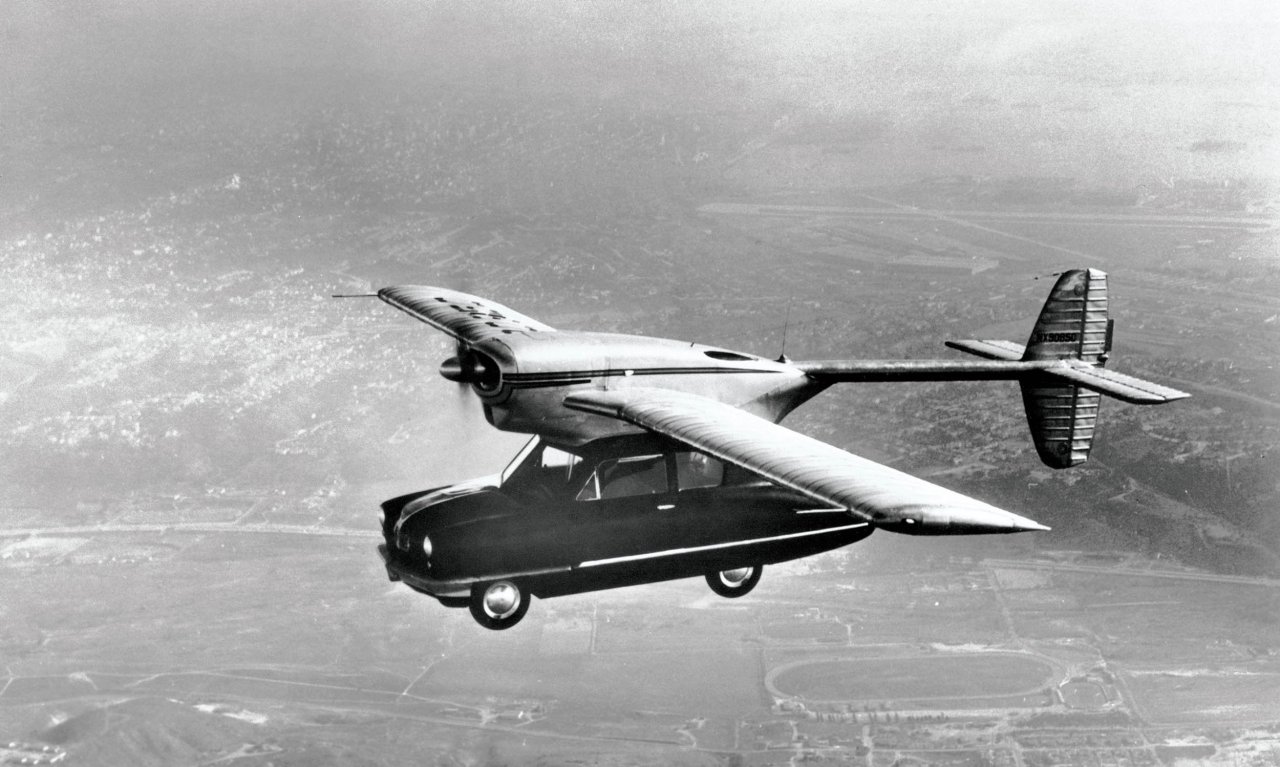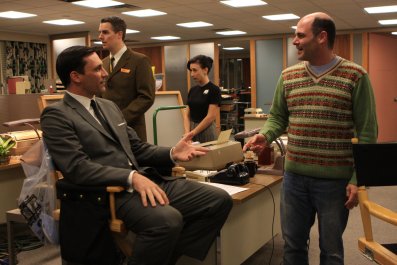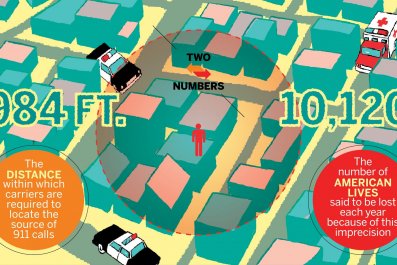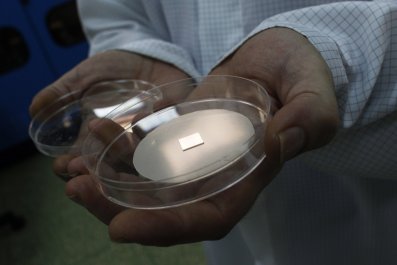It's really not that hard to build a flying car—the first working model showed up in 1947. It's taken us way longer to figure out how to keep ketchup from sticking to the inside of its bottle. The real challenge turns out to be building a flying car that makes sense for the society we live in.
Elon Musk, CEO of both Tesla and SpaceX, keeps getting asked why he can't mate his two companies and give birth to a rocket car. He answered in a series of recent tweets, including: "Flying car pros: travel in 3D fast. Cons: risk of car falling on head much greater." And Peter Thiel, everyone's favorite curmudgeon investor, goes around saying, "We wanted flying cars; instead we got 140 characters."
Two main obstacles have kept us from living in a Jetsons cartoon. The first is developing vertical takeoff and landing capabilities for a car-size vehicle. It doesn't make much sense to market flying cars to suburban moms who would then have to race them down Stone Brook Chestnut Lane to achieve liftoff. A mass-market flying car pretty much has to go straight up and down from the driveway—quietly, safely and cheaply. That's a seriously hard engineering feat.
The second obstacle is ensuring safety and order once a whole lot of individuals suddenly start zooming around in the air. Automobile accidents kill 1 million people a year around the world, and cars just move in two vectors. Add a third vector—the air above the Earth's surface—and the probability of chaos goes exponential. If we're concerned about overpopulation, we should develop human-piloted flying cars that are so cheap everybody can get one.
Credit for the first flying car goes to Robert Edison Fulton. His family started the company that became Greyhound Corporation, and his father was president of Mack Trucks. In 1947, he unveiled the Airphibian. The car end of an Airphibian was a four-wheeled cockpit shaped like the head of a beagle. That piece could be attached to a plane fuselage, which had to stay at the airport while you drove into town in the front part. The thing flew, and one now sits in the Smithsonian.
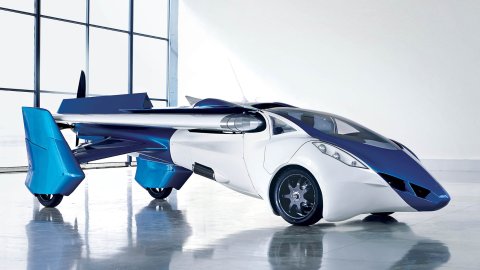
Over the years, Ford worked on a flying car, and Chrysler worked on a flying jeep for the military. Neither went into production. Inventor Moulton Taylor got his Aerocar airborne in the 1960s and almost sold Ford on the idea of marketing it.
None of those machines were practical. All of them took off like an airplane.
In March, a Slovakian company called AeroMobil gave a talk about its working prototype at brainy carnival South by Southwest. It's shaped like a wasp, with wings that fold back for driving, but also takes off like a plane. The prototype can fly 430 miles, and as high as 9,800 feet. The company says the model has been certified by the Slovak Federation of Ultra-Lite Flying, although that sounds as reassuring as learning that your heart surgeon's degree comes from the Medical College of Turks and Caicos.
"Unless the flying car can take off vertically, it is not going to change personal transportation," says Paul Moller, who has worked on this problem for 50 years. He is part nuts and part genius. He has spent more than $100 million trying to perfect vertical lift engines, which at one point left him in personal bankruptcy. He's also made millions of dollars on technology he's spun out of his work, and wowed a discerning crowd with a 2004 TED Talk on flying cars. His M400 Skycar, constantly on the verge of being ready, looks like a cross between a Corvette and a Cuisinart. Its four rotary engines tip up for vertical takeoff, then turn horizontal to fly—though as of last year, he'd gotten the Skycar only about 40 feet off the ground. Nonetheless, he's been taking preorders since the 1990s.
The Skycar's problem remains engine development, Moller tells me. His company in Davis, California, has long worked on inventing this new technology by itself, and that's always expensive. But something new is changing that: the boom in drones. Drones are small vertical-lift gadgets, but they keep getting bigger and more powerful. Money and brainpower are pouring in—because there's a market. If Moller can't get to a car-worthy vertical engine with his top-down approach, someone working on drones will get there from the bottom up. Solve the vertical-liftoff problem and you've got a flying car that can roll out of the garage and go straight to the sky.
This also calls into question what we really want when we hope for flying cars. Everybody but Moller has tried to build a car that can both drive down a highway and fly. But why? Amazon is investing in drone delivery so it can drop right onto a customer's lawn. It's not investing in flying UPS trucks that both drive and fly. That's because flying and driving might always be two exclusive acts—what we probably really want is a personal flying vehicle, like the ones in Blade Runner, along with a regular car for moving on land.
As for the solution to potential chaos, we're seeing it in the arrival of self-driving cars. Tesla plans to introduce the first consumer versions this year. Self-flying cars would know the paths of all other flying cars, know the landscape so you don't fly into a skyscraper and get weather updates so you don't fly into a storm. No need to make people get pilot's licenses. No worries about drunken flying. Ten years ago, the idea of a self-driving car—much less a self-driving sky car—seemed implausible. Now such technology is practically upon us.
I feel bad for Moller, whom I've interviewed a few times over two decades. He's blazed a hard trail for so long, yet someone else might finally put the pieces together and make a mass-market flying car. "What keeps me going is that I know it's doable," Moller told me in 2004. After 50 years, he might finally be right.



